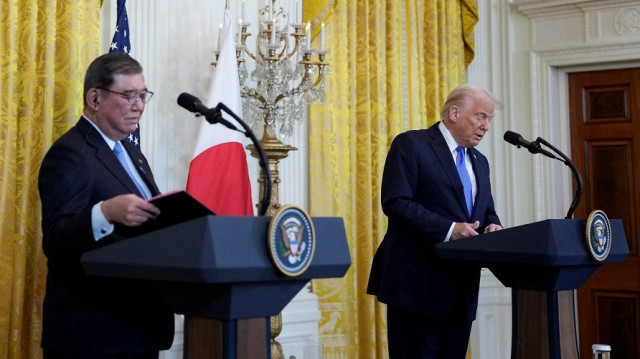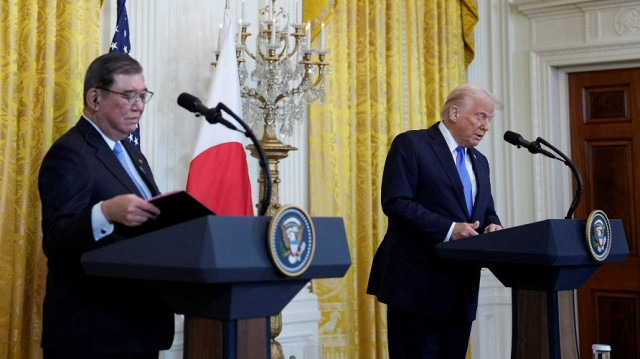US–Japan Trade Talk Stalled Again as Trump Calls Them ‘Tough’
Trade negotiations between the United States and Japan have once again reached an impasse, as President Donald Trump labeled the Japanese side “tough” following bilateral talks with Prime Minister Shi

Trade negotiations between the United States and Japan have once again reached an impasse, as President Donald Trump labeled the Japanese side “tough” following bilateral talks with Prime Minister Shigeru Ishiba on the sidelines of the G7 summit in Kananaskis, Canada.
Despite both leaders describing their discussions as cordial, no trade deal was reached. Prime Minister Ishiba told reporters, “We will continue working closely with the U.S. toward a mutually beneficial agreement that does not compromise Japan’s national interests. But there are still disagreements on key issues.”

Trump, speaking aboard Air Force One after departing the summit early to address tensions in the Middle East, struck a blunt tone. “The Japanese are tough,” he said. “Ultimately, you have to understand—we’ll just send a letter saying: ‘This is what you’re going to pay. Otherwise, don’t do business with us.’ But there’s a chance (for a deal).”
The main sticking point remains the auto sector. Japan, whose economy is heavily reliant on its automotive industry, is resisting U.S. demands for additional tariffs on auto imports. Trump’s administration has threatened 25% tariffs on automobiles and parts, along with steep tariffs on steel and aluminum—50% in some cases. A “reciprocal tariff” of 24% on Japanese goods, temporarily reduced to 10%, also remains on the table.
According to Japan’s Daiwa Research Institute, if the reciprocal tariff rises back to 24%, it could shrink Japan’s real GDP by 2.2% by 2029. The automotive industry alone employs roughly 5.6 million people—8.3% of Japan’s workforce—and contributes about 10% of the country’s GDP, according to the Japan Automobile Manufacturers Association.
Major Japanese automakers such as Toyota, Honda, Mazda, and Subaru are bracing for a combined loss of over $19 billion in the current fiscal year if tariffs are implemented as proposed.
“For Japan, autos are a matter of national interest. We will do everything we can to protect this industry,” Ishiba stressed during his remarks in Calgary.
In a bid to reduce the trade imbalance with the U.S., Japan has reportedly offered a number of concessions, including increased imports of American soybeans and enhanced cooperation in shipbuilding. Tokyo has also emphasized its status as the largest investor in the U.S., warning that damaging Japan’s economy through tariffs could undermine its investment capacity.
So far, however, these efforts have not been enough to close the gap between the two nations. The G7 summit talks, while not entirely fruitless, once again underscored the deep divides in the U.S.–Japan trade relationship—and the tough road ahead.
Disclaimer: The views in this article are from the original Creator and do not represent the views or position of Hawk Insight. The content of the article is for reference, communication and learning only, and does not constitute investment advice. If it involves copyright issues, please contact us for deletion.